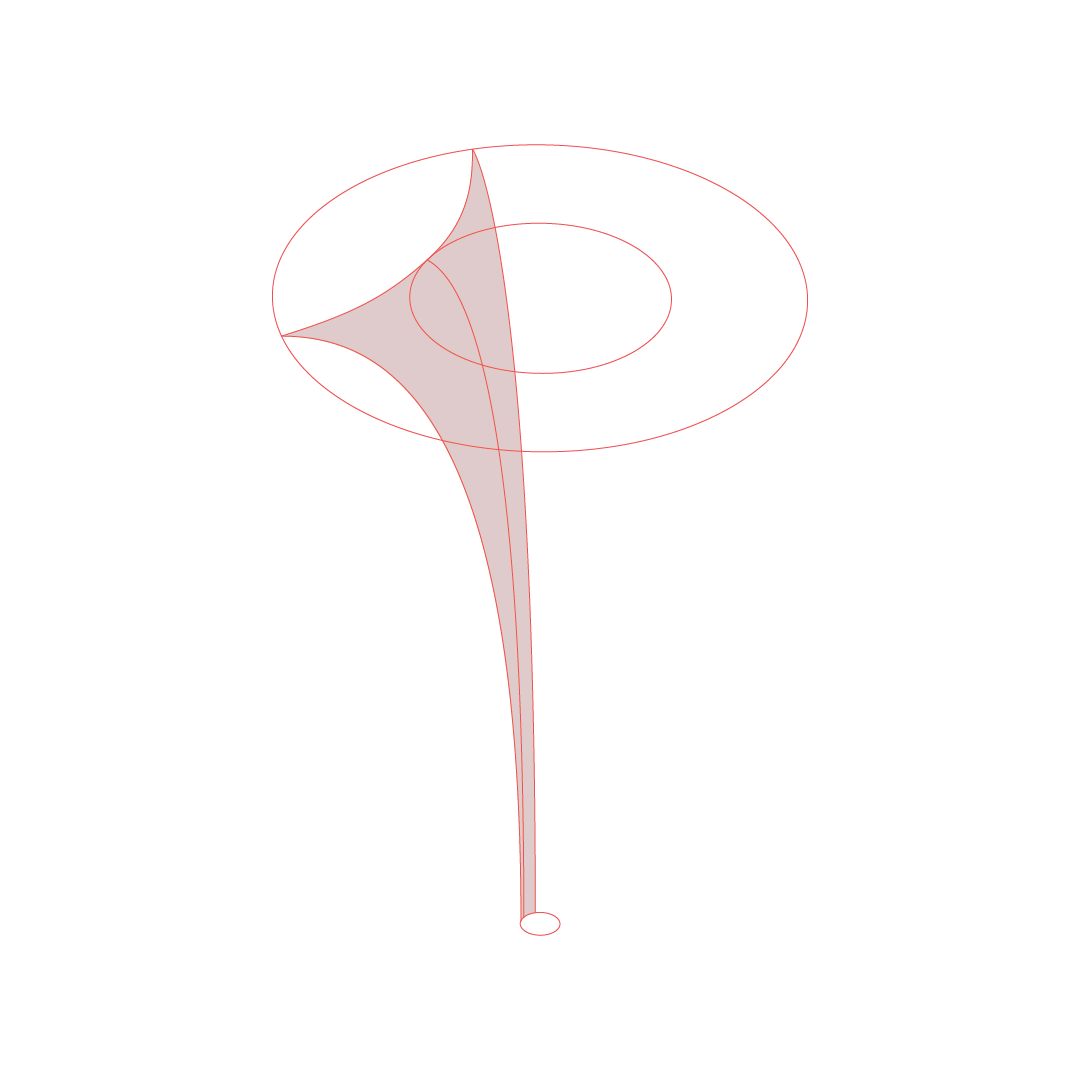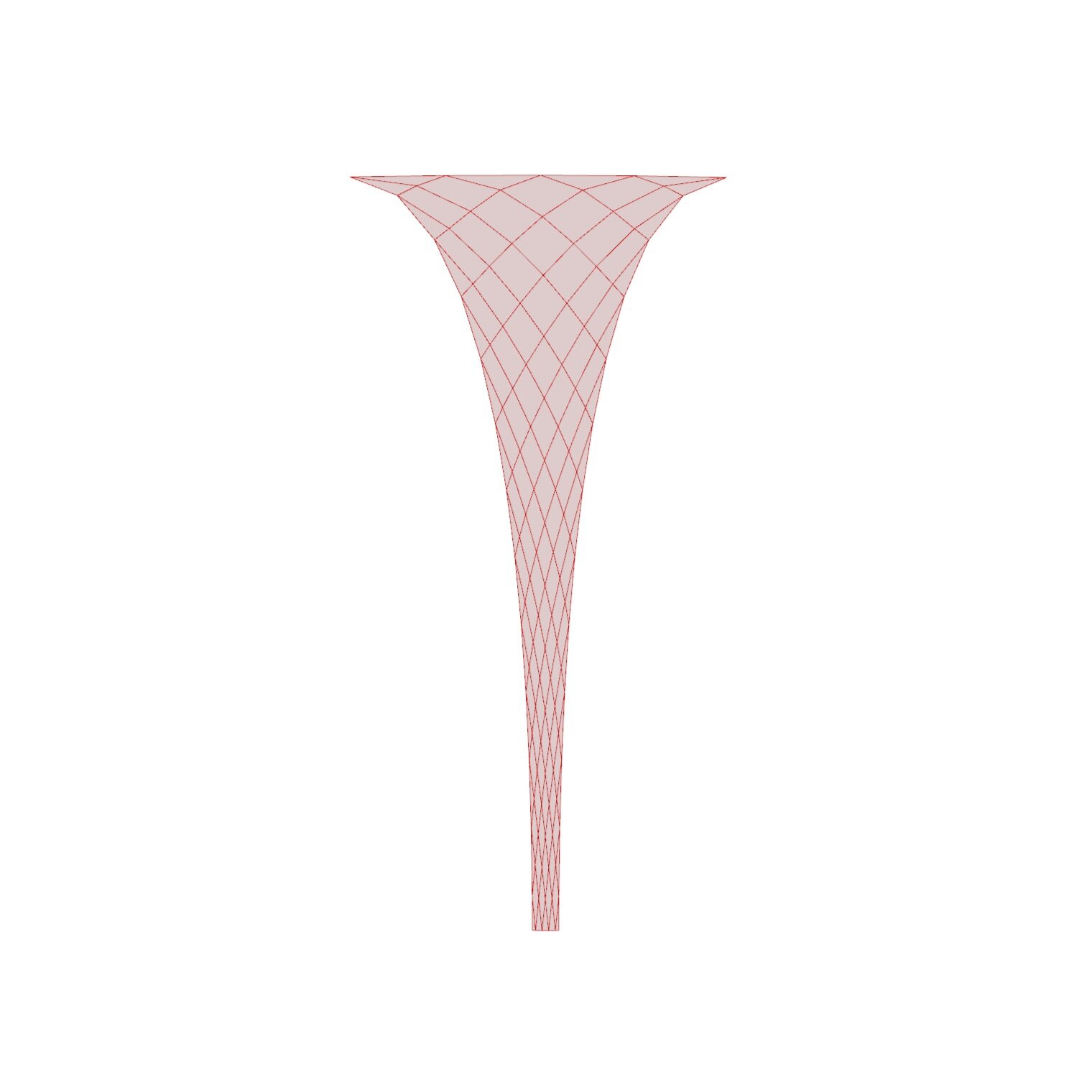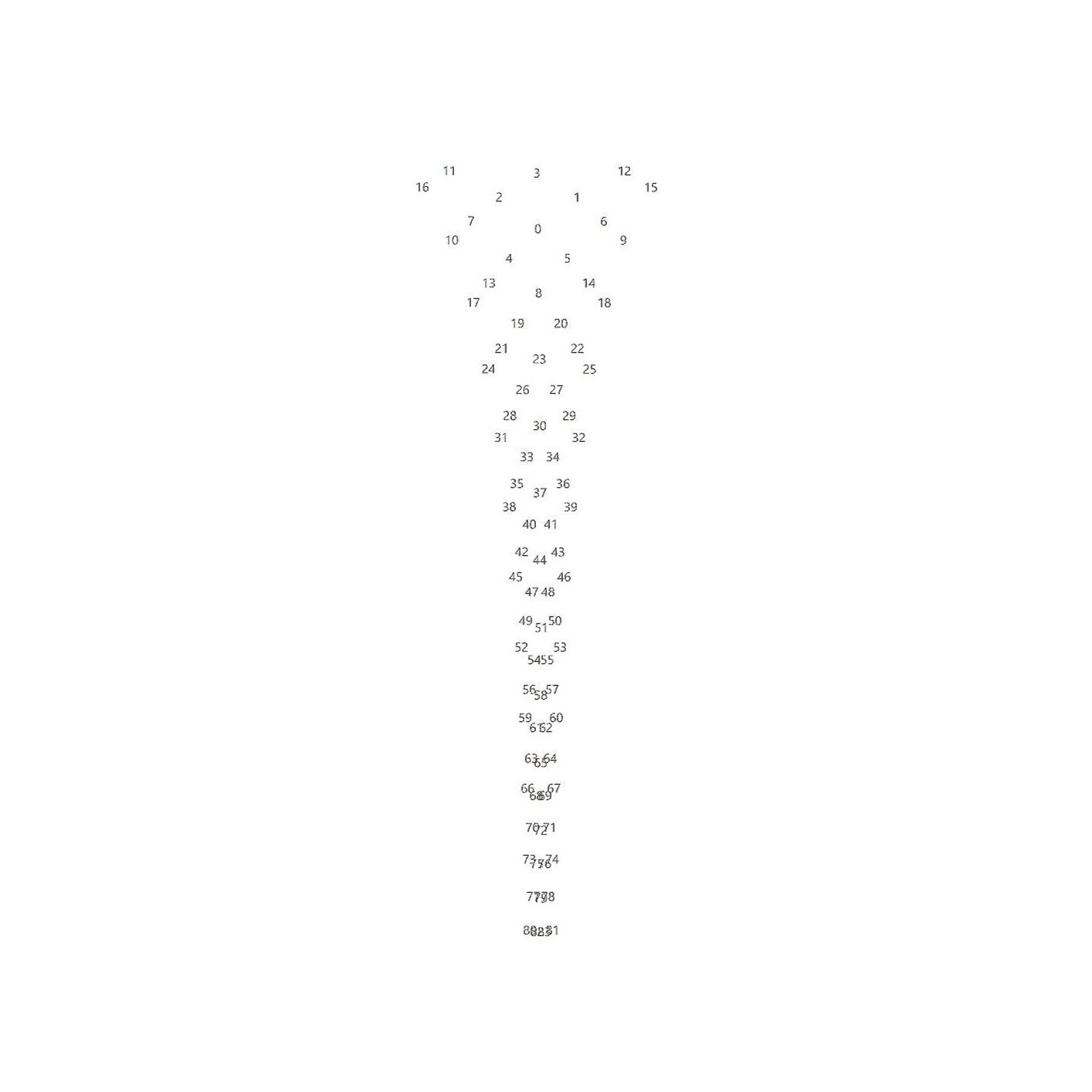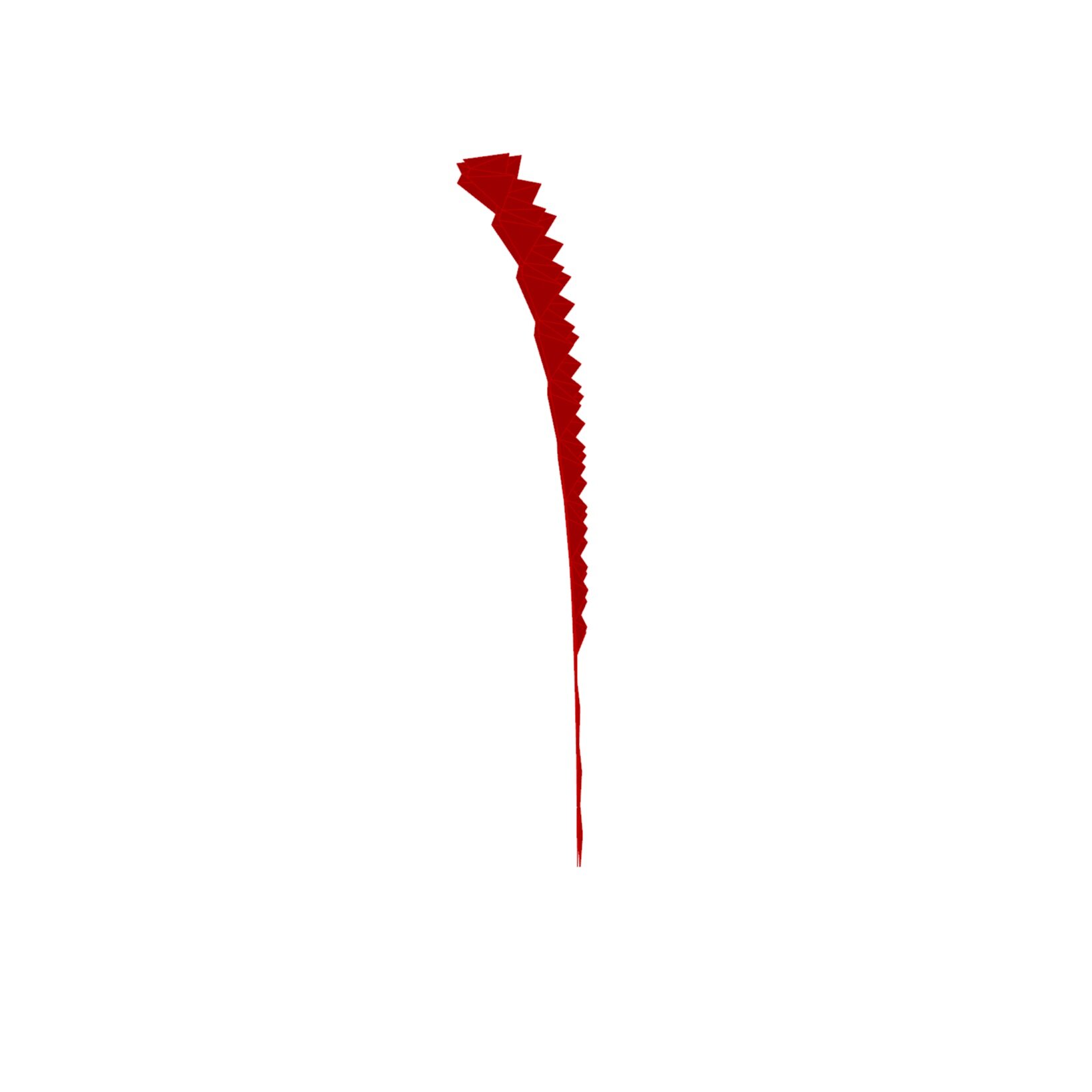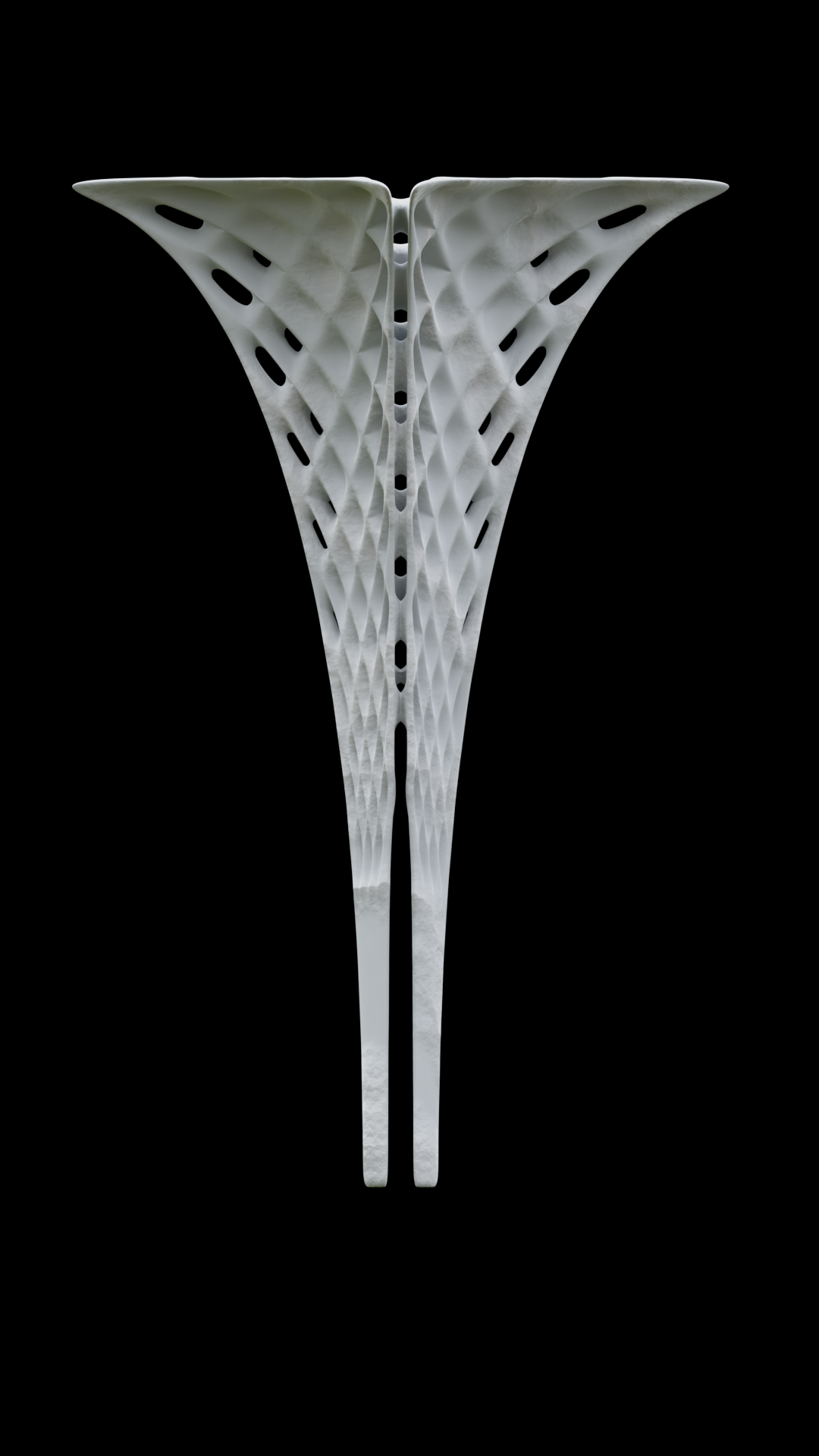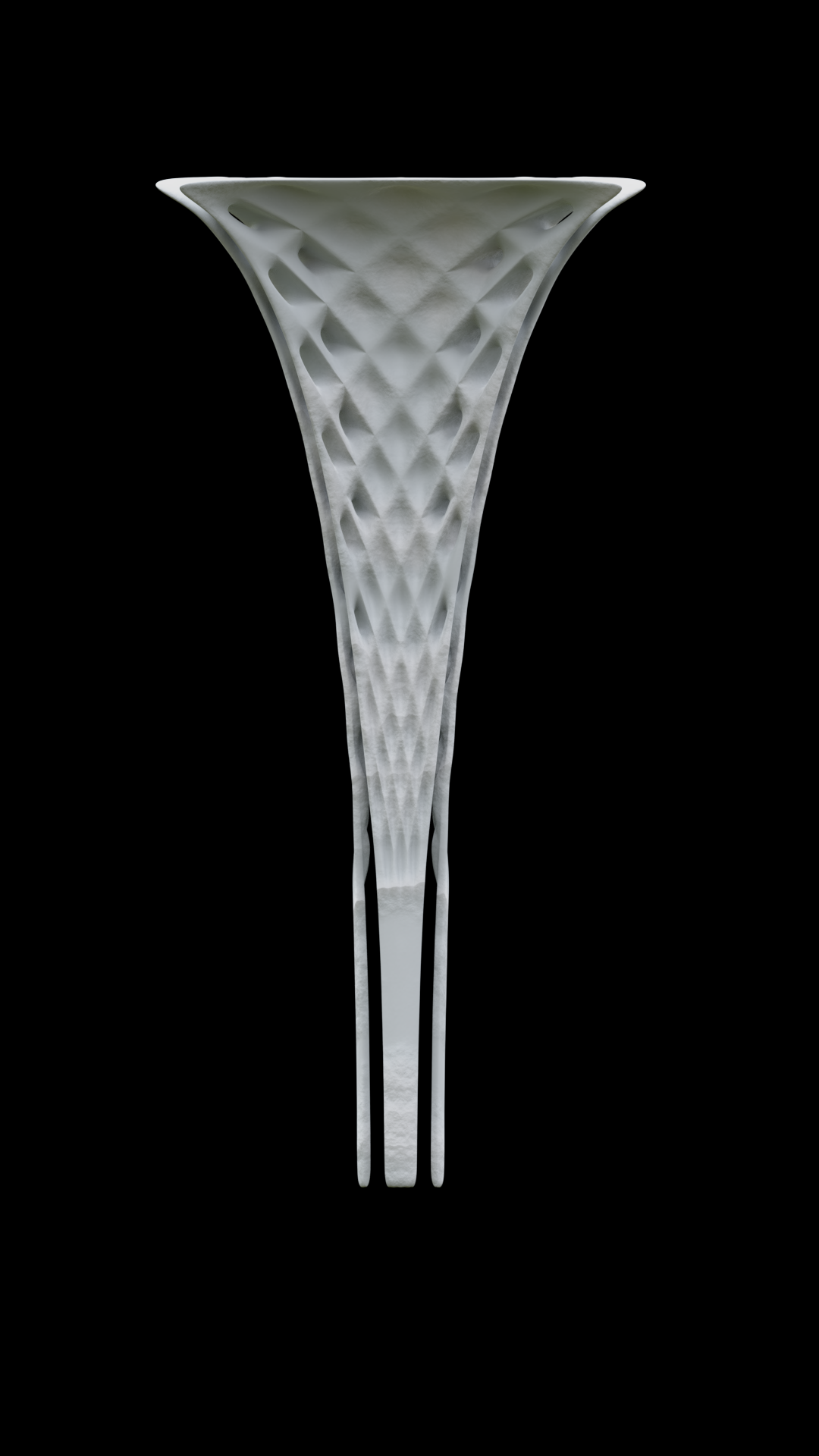Procedural Architectural Elements | E1
The column
Elements Designed In Isolation
Surface from Arturo’s webinar exercises
The Stage
The turntable above followed a great workshop by Arturo Tadeschi called Patterns Vibe that is part of a larger collection called Parametric Vibrations. That webinar steered me back into grasshopper’s mesh workflow during a heavy Houdini binge awhile back. A larger chunk of the course focused on managing subdivisions, setting up patterns and controlling them in your standard “parametric” fashions (i.e.: attractors, painted gradients, etc). The instruction was great, but the content reminded me of and old post by Michael Pryor that dates back to 2012: Pillow Surface. The similarities, this repetition, the word Parametric, it all began to stir up previous criticisms of the subject surrounding algorithms in architecture. However, that criticism is worth more development than a reactionary rant so we’ll save that for another entry.
Regardless of some criticisms, here instead I am going to elaborate on some inspiration from that workshop as well as a students precedent study I oversaw at the time that sparked the idea behind the model depicted above.
SC Johnson’s Administrative Building (Frank Lloyd Wright)
The famous Frank Lloyd Wright columns (right) were the students subject, the building being their site and these column elements required fabrication within a larger scale model. Some significant time was spent thinking about these cast structures over a few late nights. While their geometry is quite simple, their implementation was uncannily suited for the plane in which my mind was residing.
In simpler terms, my tendencies (after obsessing over Graham Harman’s writings a few years back on Object Oriented Ontology) steer my analytical thoughts towards the objectification of things. While isolating a 3D model of this structural element, the form, purpose and lack of detail (not to mention it’s alienation from context and scale) inspired some direction for these criticisms on contemporary design:
How might key architectural elements develop through a design process of isolation and objectification?
Digital tools were of course to be utilized, but a point in many criticisms of the labeled "Parametric” designs is that the tendencies, predefined tools, etc, within the software take more power over the design process than perhaps they should which results in higher rates of repetition and meaningless detail / ornamentation. Potentially a staple result of our culture today that demands speed more than ever. I’ll admit, the clearly tasteful to some “pillowing” pattern I mentioned before was utilized in this exercise, but the prompt is more about the other qualities of the element that come from this thought exercise. Detailing in aesthetics, such as that discussed by Mark Foster Gage, will hopefully be explored in future exercises on this subject.
Process
The basis was simple: setup a procedure for outlining the silhouette of a column in as reduced a state as possible.
I will also attempt to steer from the word parametric and instead use a more digitally standard term, procedural, even though in root both refer to a sped up version of an age old systematic process of design.
To do this I figured we could take the skeleton from the FLW element. Two curves for the column diameter, top and bottom, are connected with an arc who’s curvature can be controlled in this instance via amplitude. For the remainder of the quarter an additional arc is created on the bottom curve with a different upper diameter. This sets up a flexible but simple basis for generating lots of silhouettes that can be adjusted as the procedure develops.
I wont show any scripts here since the process is mostly straight forward and the detailing is a Frankenstein of the aforementioned designers’ processes with some of my own shortcuts.
The particularities of my definition setup the project to be square (symmetrical 4-ways) as that of the FLW column or Lake|Flato architects’ algorithmic-ally similar project. Again, this keeps things simple for the first passes and is easily adjustable for tuning and iteration.
The next step was to create opportunity for surface detail. The basis of pillowing or this diamond pattern (there has to be a better name for this) begins with subdivision but excels with defined order and intersection. It just so happens it also accentuates the dramatic surface curvature. The root of the few different methods I tried was a central attractor point pulled from the geometry. This allowed me to control the intensity of any manipulation towards those dastardly corners within the mesh where things have a tendency to get messy. The points, or rather the panels, are reordered based on proximity (hence the attractor) before the actual pillowing happens. That process of subdividing the diamond panels (utilizing Delaunay Triangulation) and adjusting their centroid is already explained on Michael’s site or in Arturo’s webinar both linked at the beginning of this entry.
The beauty of this experiment in my eyes lies with the seams created by adjusting the mirror planes in the final step of the procedure. By tuning the amplitude of the pattern along with both the thickness of the element and where it mirrors you can really create some dramatic moments amidst a cluster, or even join the quadrants together. Looking back, this fluid intersection reminds me of all these isomorphic explorations that are popular recently which, unsurprisingly, have formal similarities to that of stone sculpting dating back ages.
The process doesn’t quite end there for me as most objects will never exist in the void but rather are identified among their surrounding. The difference here is they are not influenced by such context or derived from it, but they still have relationships and impacts. That is where the development of both the material kind and this slice of context came to be. It is my intent in further explorations to create mock-ups that suggest varying scale, as this plays a large part in interpretation but for this exercise the scale was left ambiguous.
I may delve into the development of the materials and context within Blender at a later date but for now I will leave it here. Hopefully this is merely the beginning of a prolonged thought experiment and design exercise.




